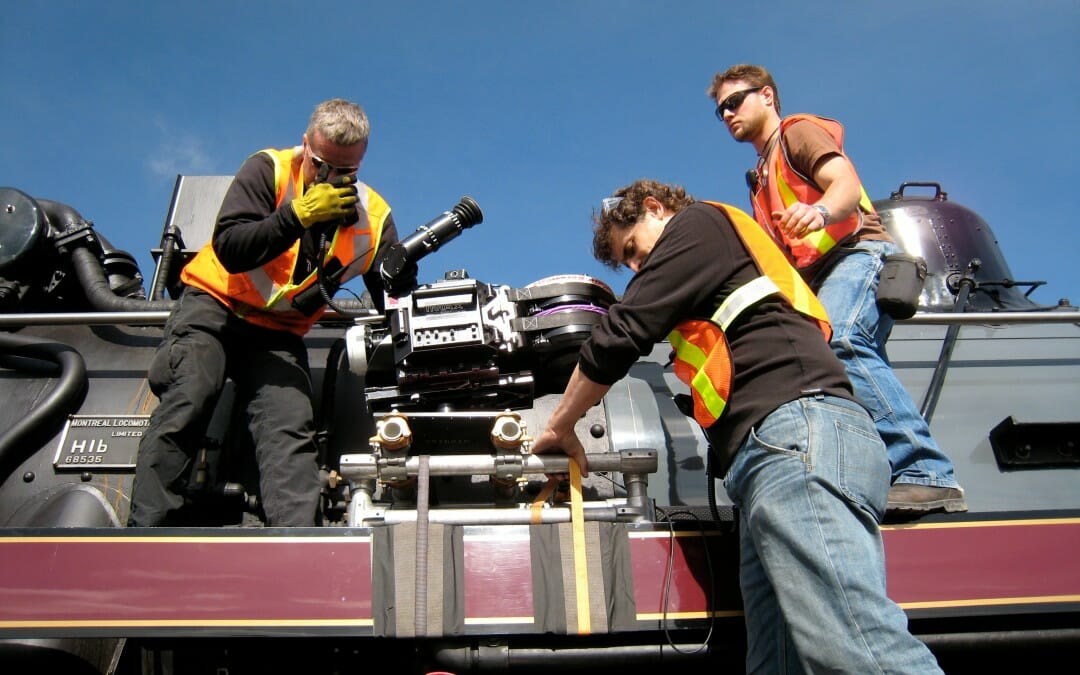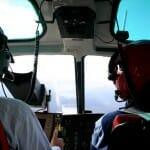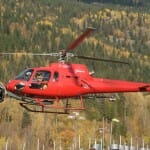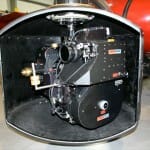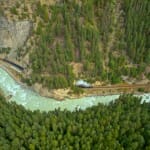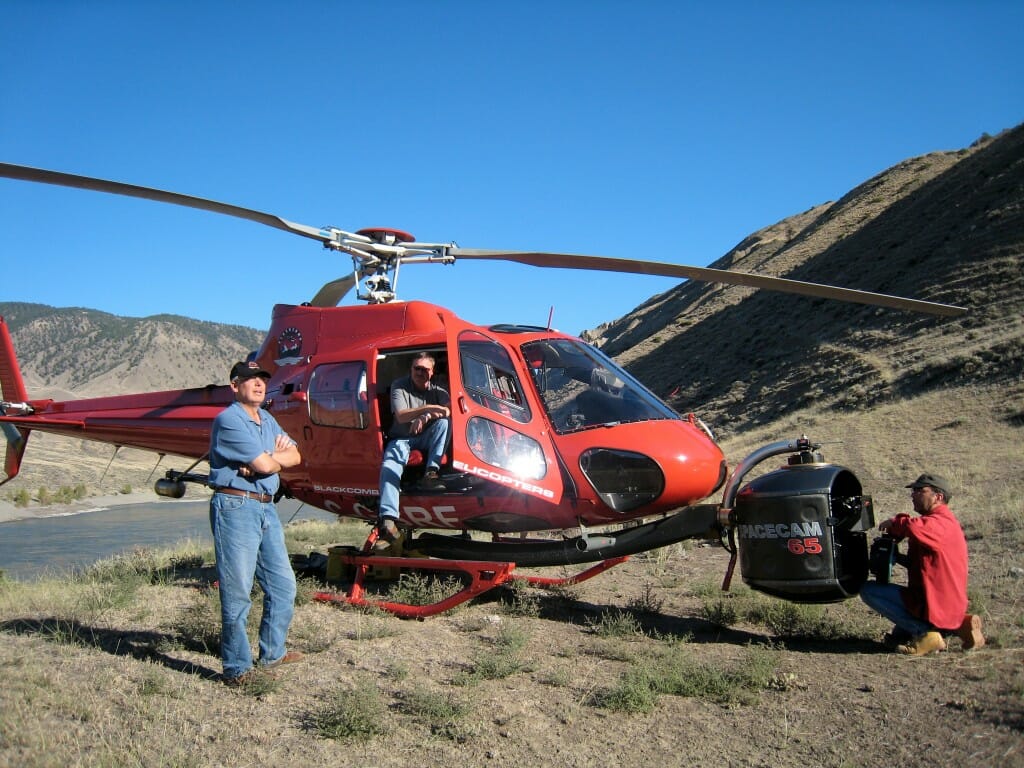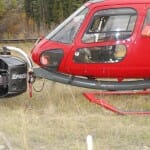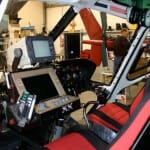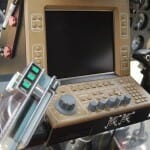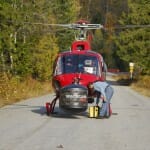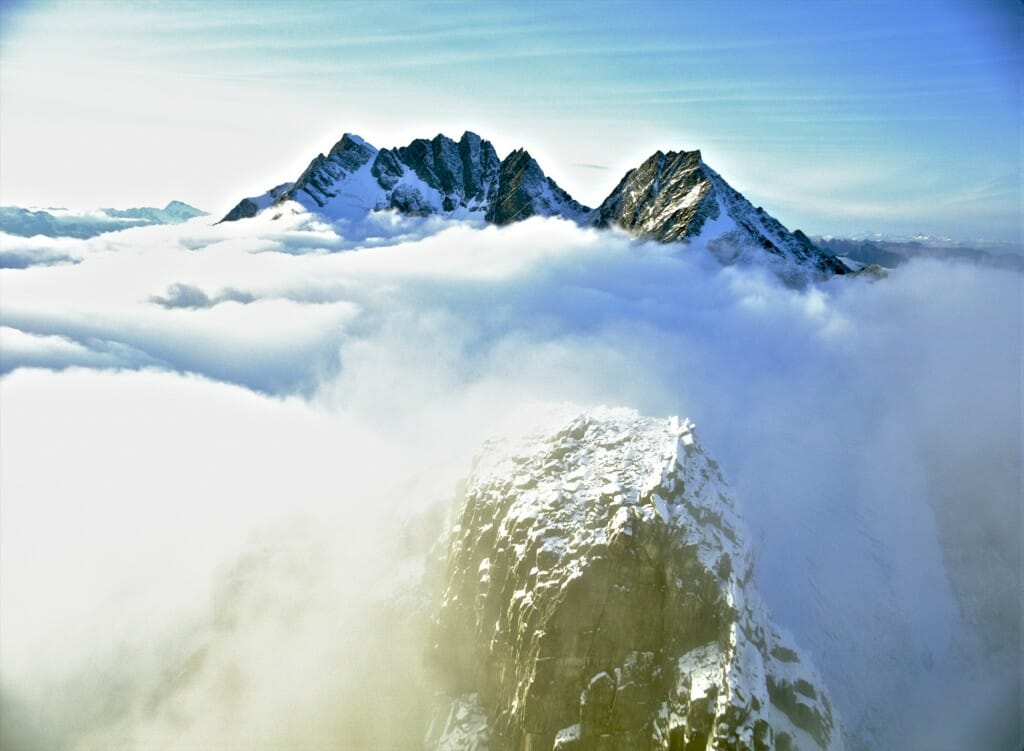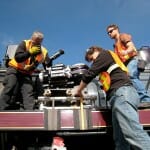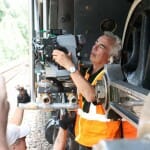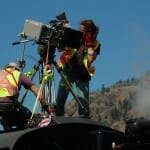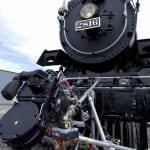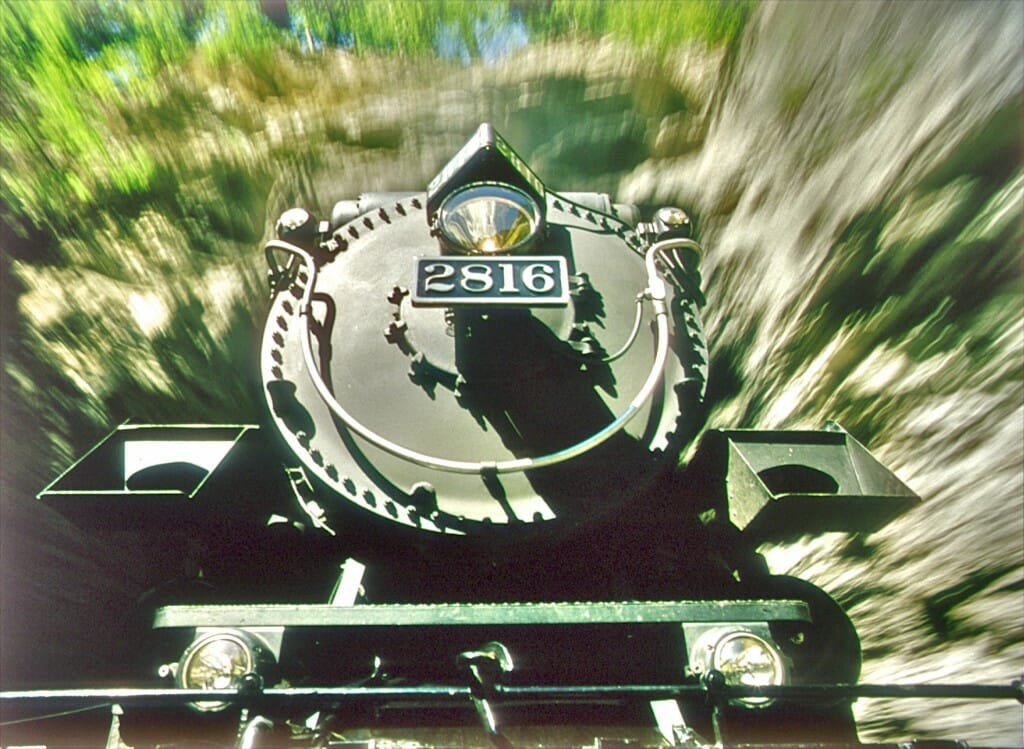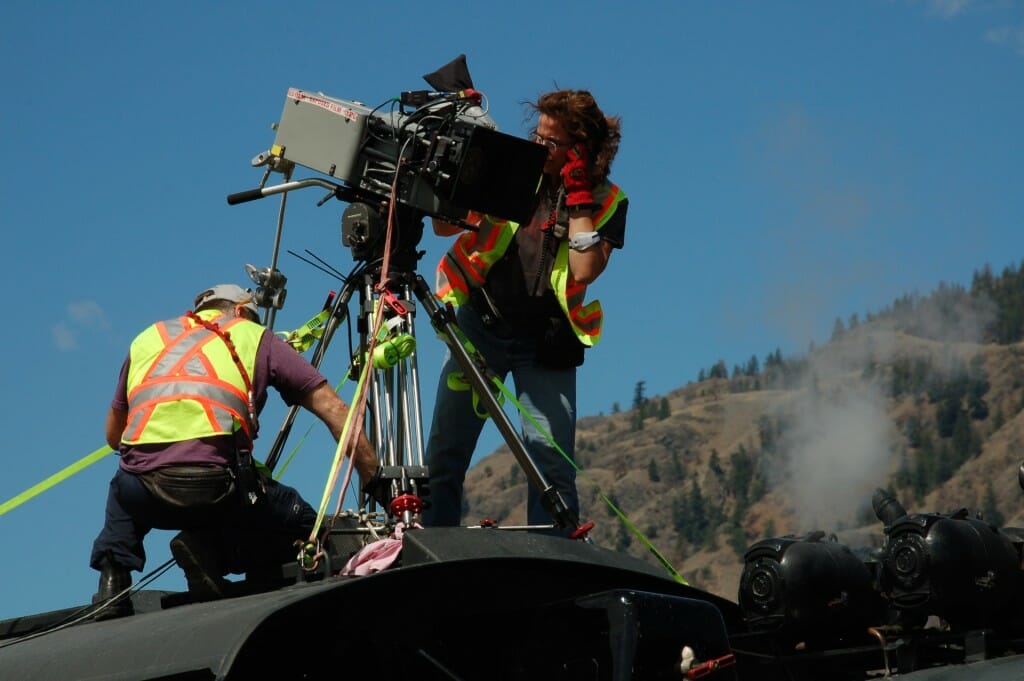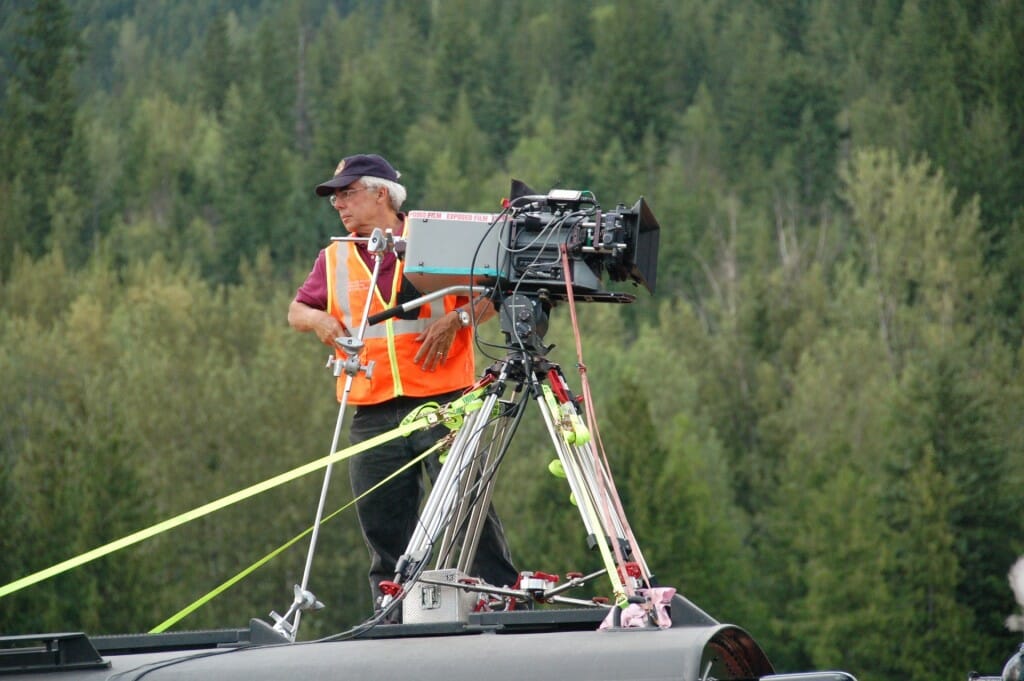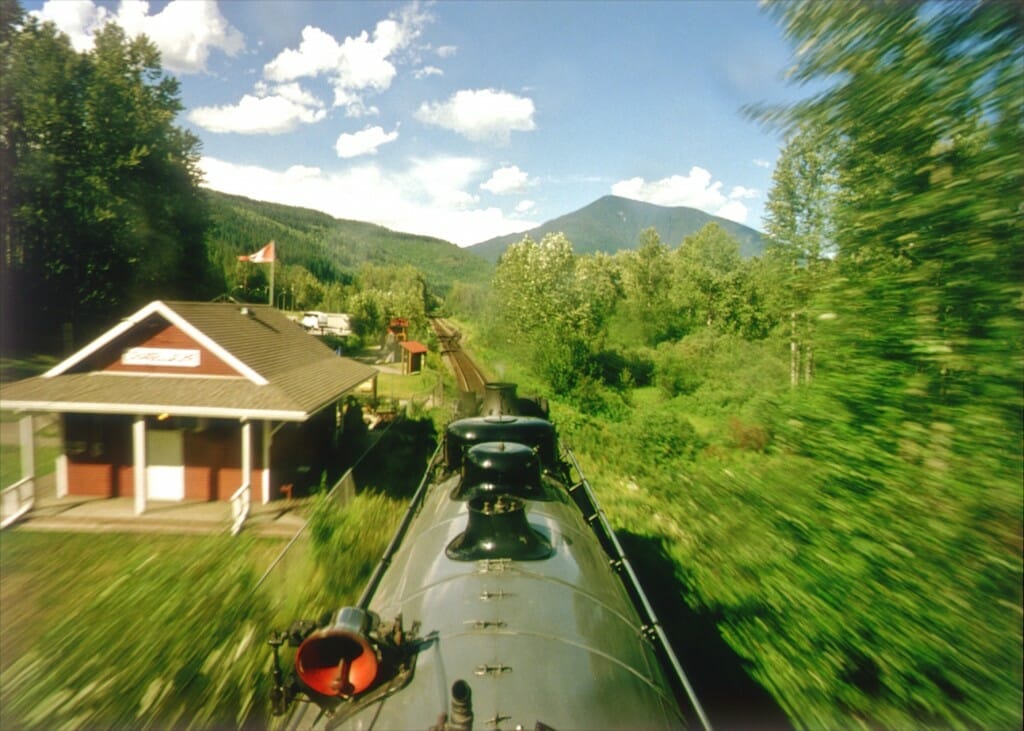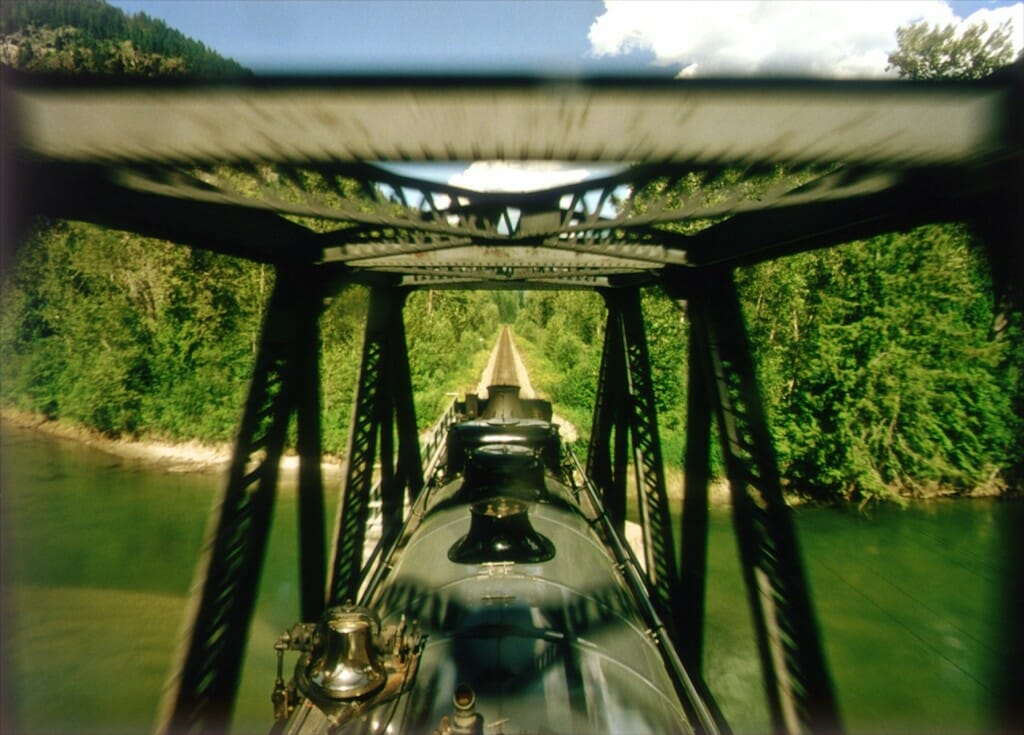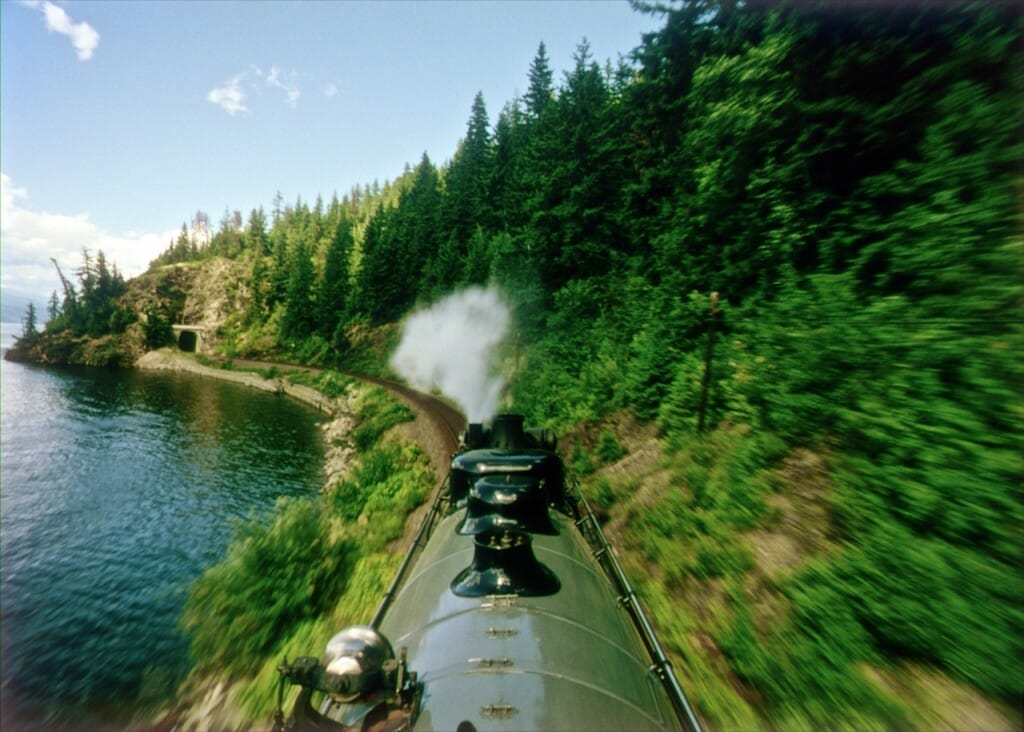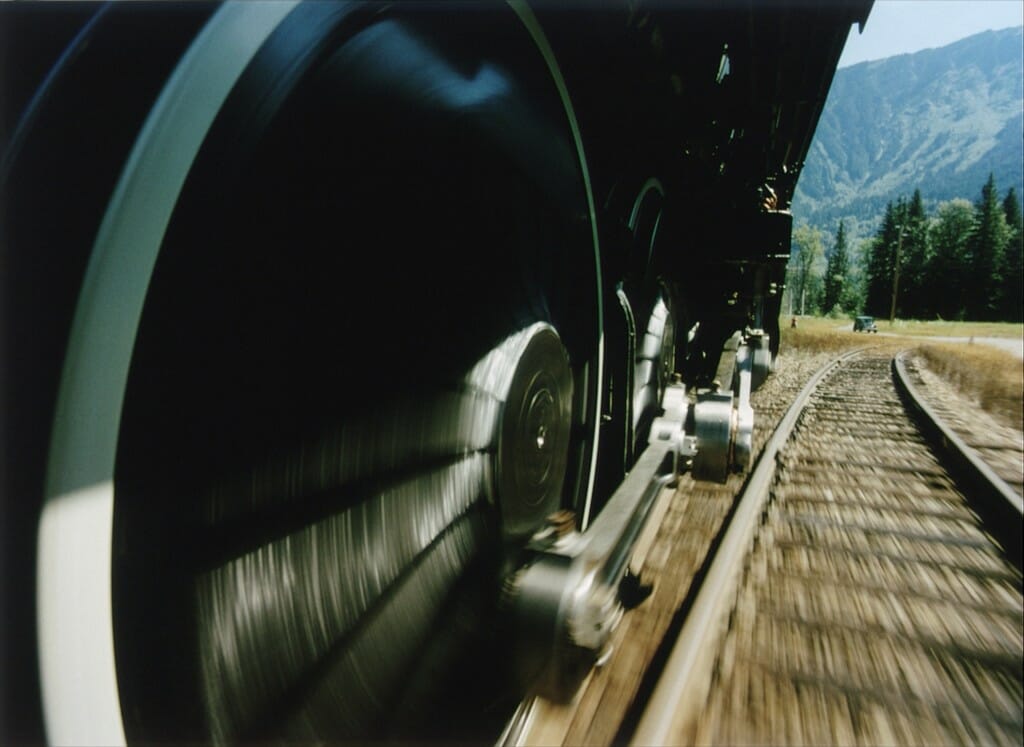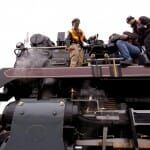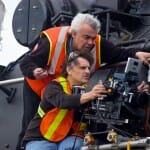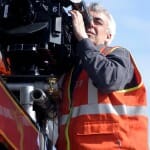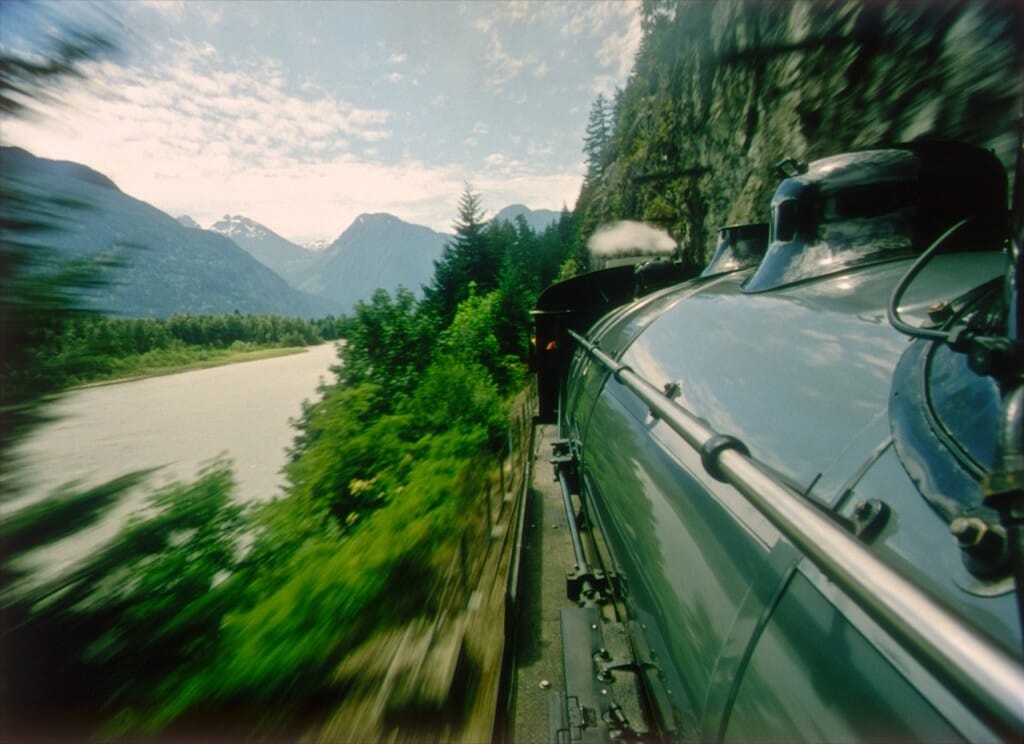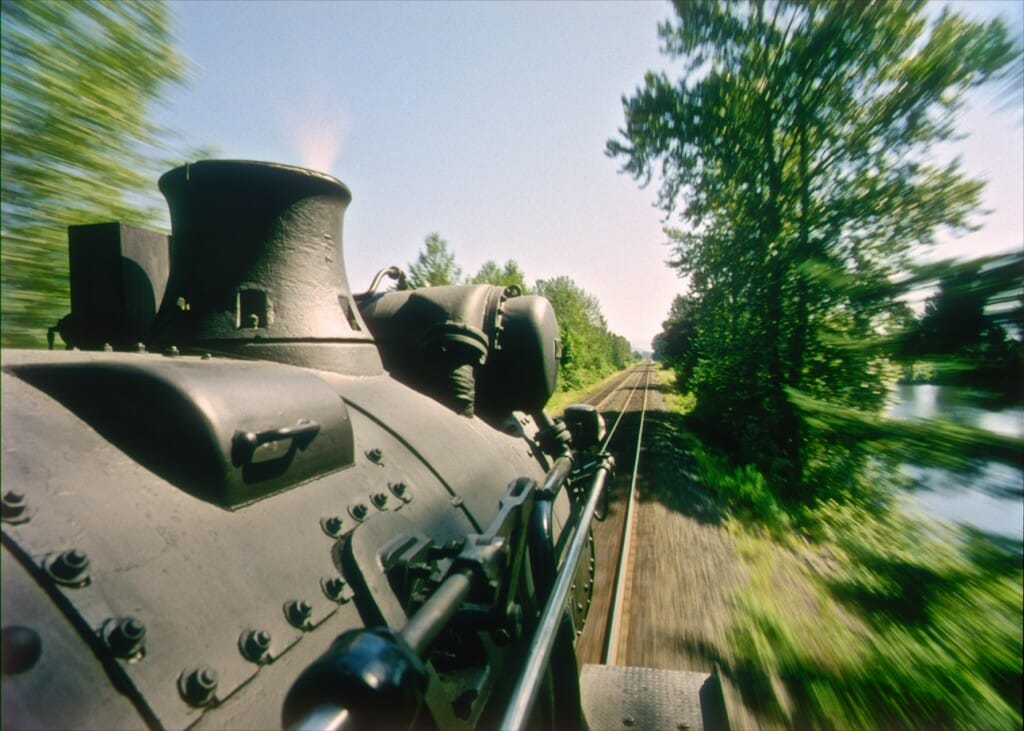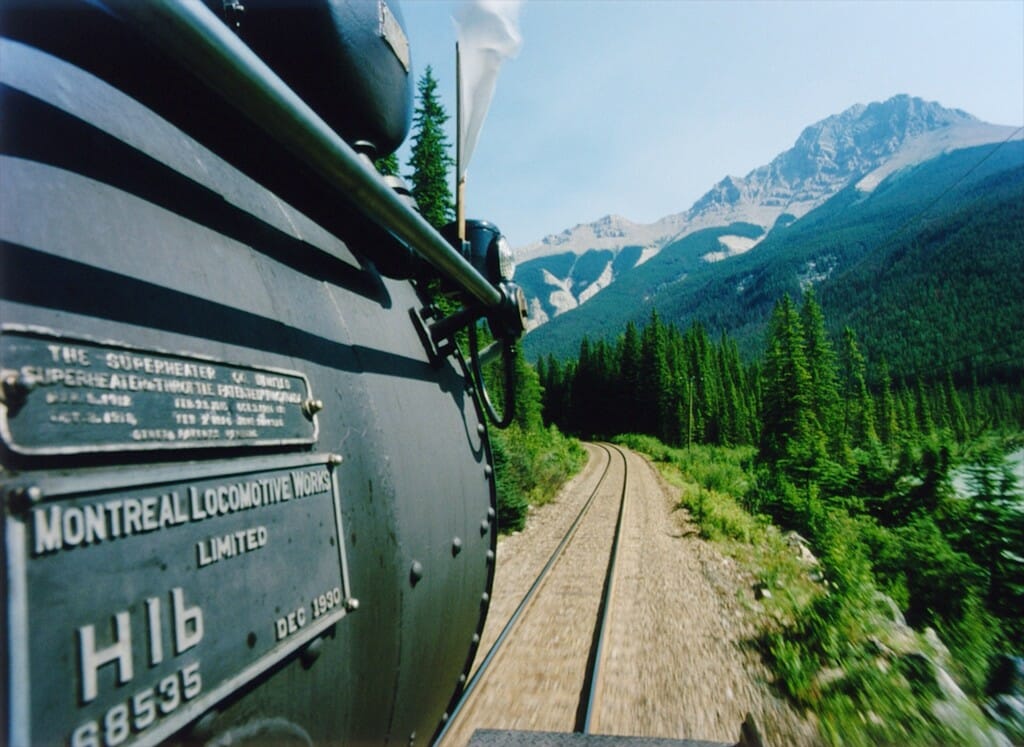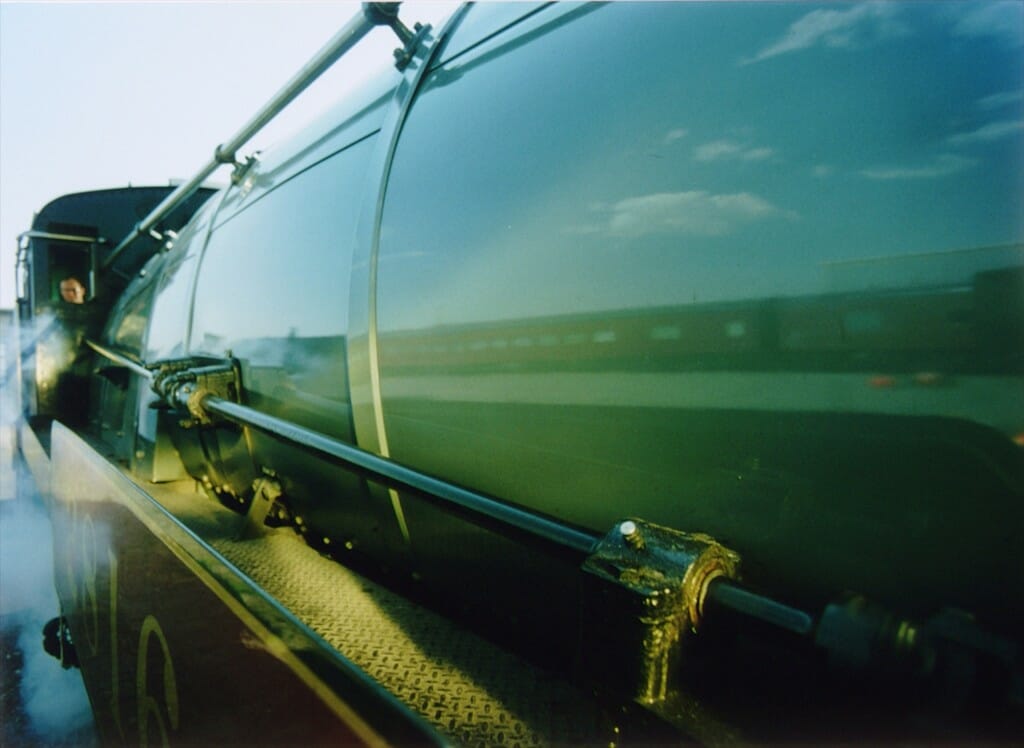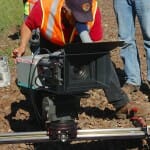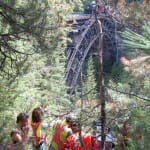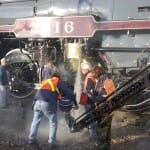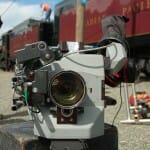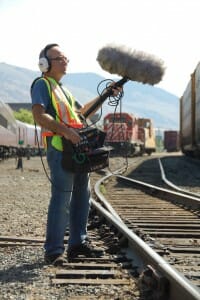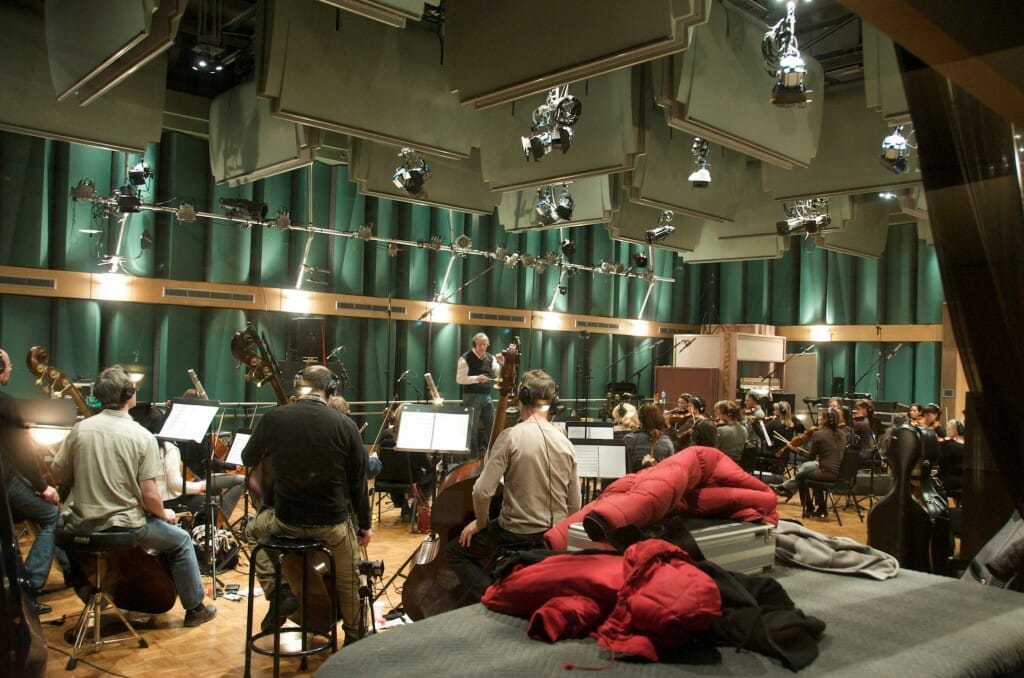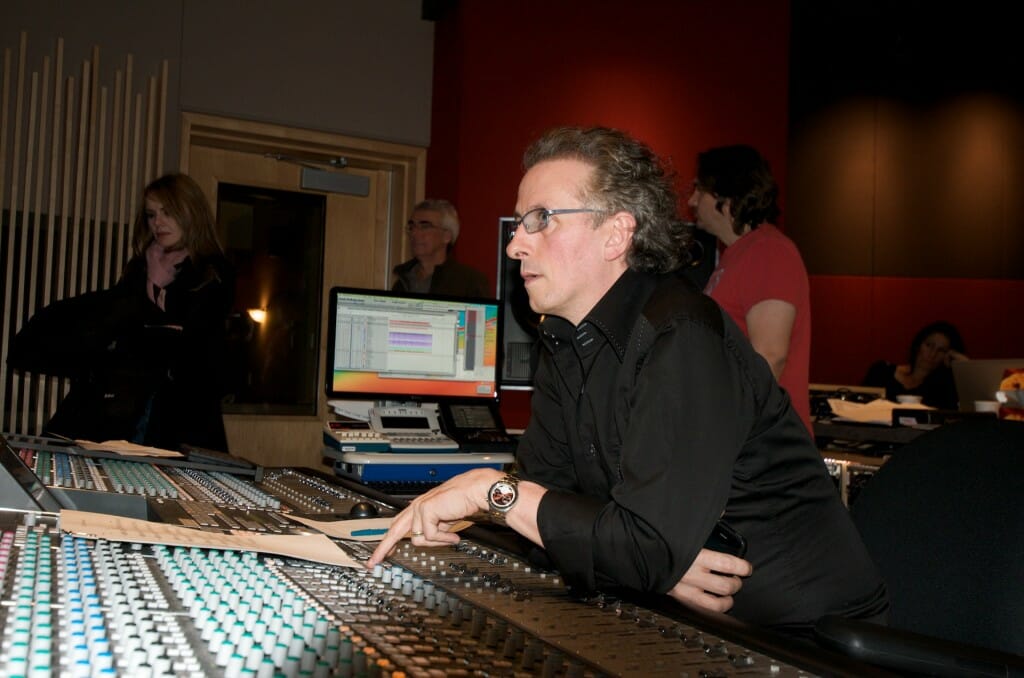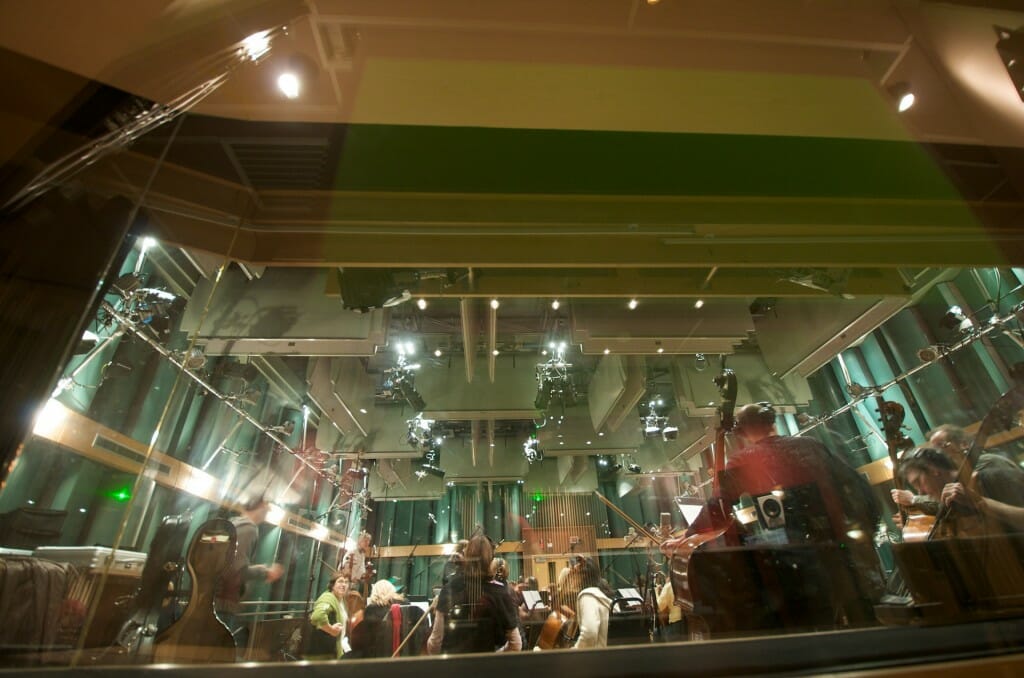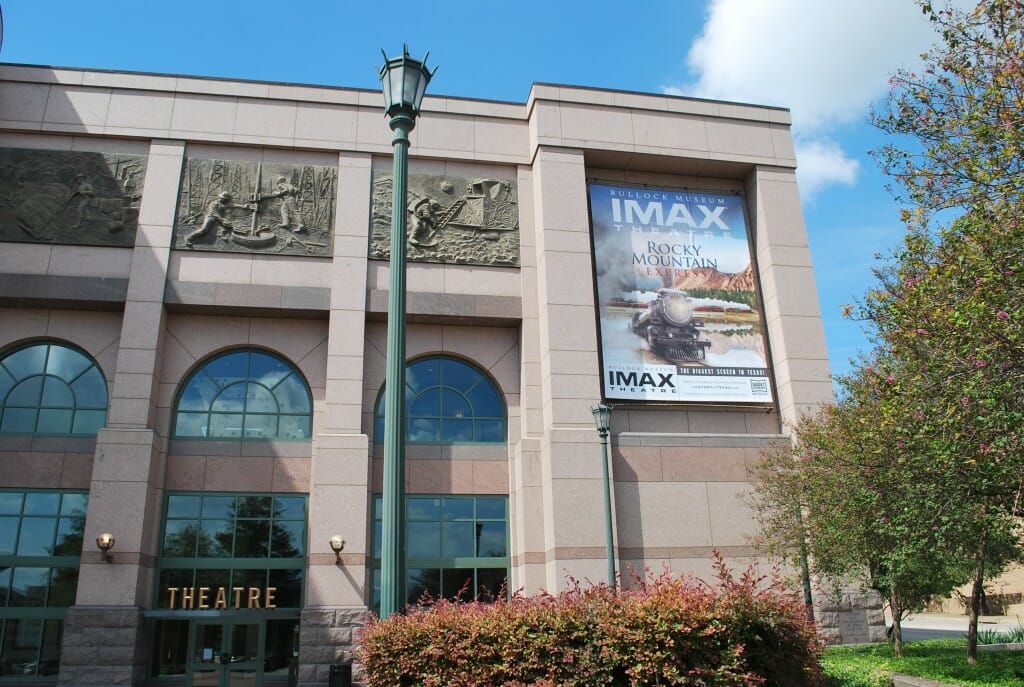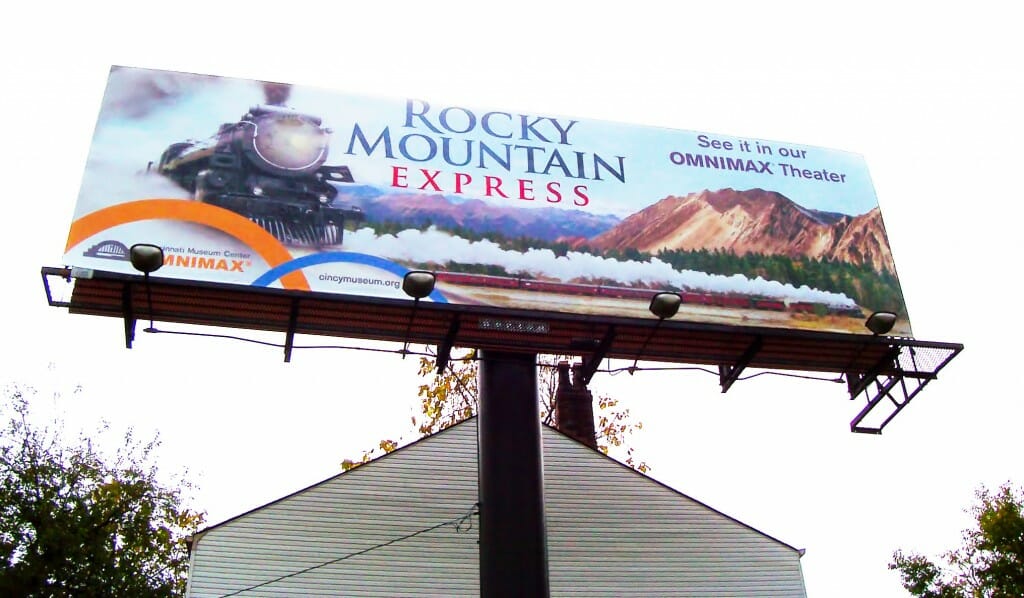IT WASN’T MADE IN A DAY. The award-winning giant screen film Rocky Mountain Express is a culmination of filmmaker Stephen Low’s remarkable 30-year career shaping films for the giant screen. Kindled in childhood, Low’s love of high-fidelity cinema and his fascination with the steam locomotive have come together in a giant screen experience that brings alive the magic and drama of the steam age for audiences of all ages.
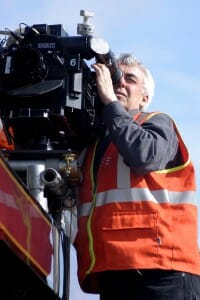 How the Film was Made
How the Film was Made
Production work for Rocky Mountain Express took place over a five-year period (2006-2011). The production team worked to schedule perfect shooting opportunities with the star of the project, the Empress (CPR 2816), a steam locomotive built in 1930 and restored and operated by the Canadian Pacific Railway. Low filmed extensively from the air using a helicopter and gyro-stabilized camera mount to capture the train’s journey and the great diversity of the western landscape. “Ultimately, we mounted IMAX cameras all over the train as well,” says Low. “We wanted to give audiences an intimate ’being there’ experience of steam power and this magic place that even train engineers don’t get to experience.”
Documented below are key stages of production, including aerial filming and camera mounts.
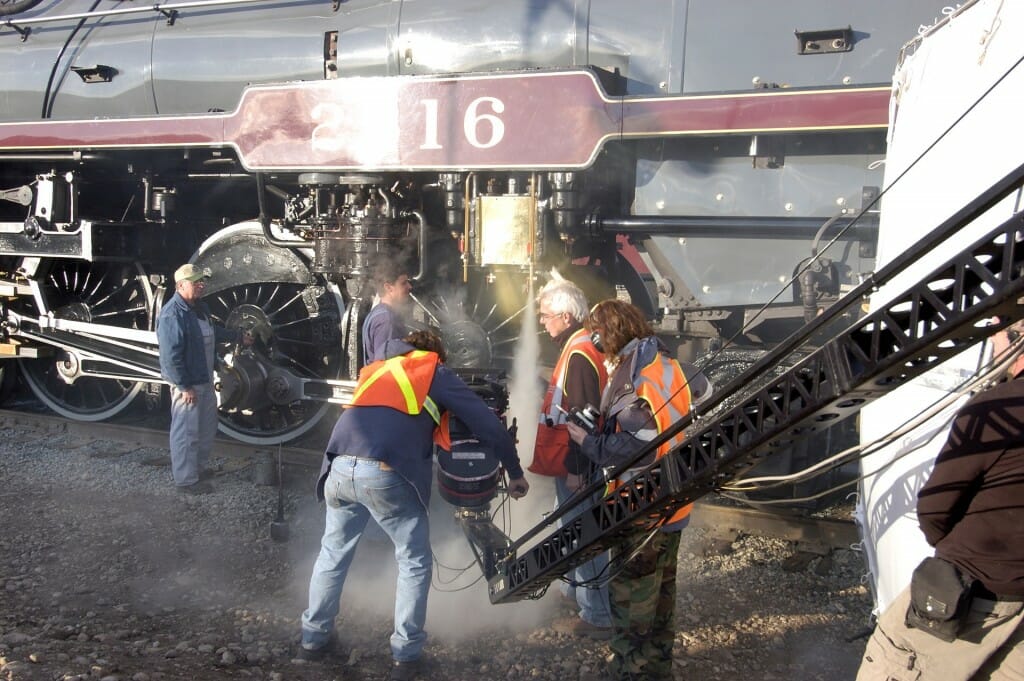
Format & Fidelity
The production was filmed with full 15/65mm negative—world’s largest film format, guaranteeing spectacular image fidelity on the giant screen. As the film unfolds, the kinetic train journey is punctuated with richly animated 3D maps and lovingly restored archival images that give audiences deep insights into the dramatic story of shaping a transcontinental railway through some of the most beautiful but forbidding terrain on Earth.
Aerial Shooting
Aerial shooting played a key role in capturing the train journey and the spectacular landscapes in Rocky Mountain Express. Key to success where a uniquely qualified helicopter pilot, a chopper capable of the lift necessary for work in the mountains and the capable gyrostabilized Spacecam system for filming large-format 65mm negative (70mm film) together with a specialized operator.
- Director, pilot and Spacecam operator.
- 70mm camera in gyro-stabilized Spacecam mount for helicopter shooting.
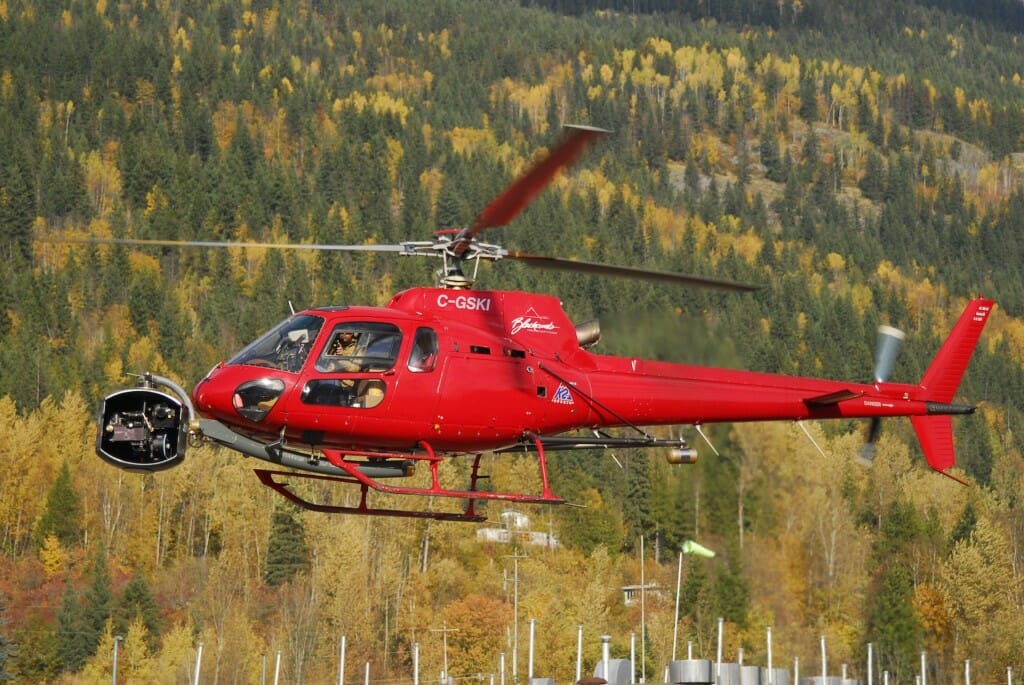
The Chopper used on Rocky Mountain Express is an Aerostar Squirrel. With a single engine it has tremendous power to weight capabilities essential in mountain photography.
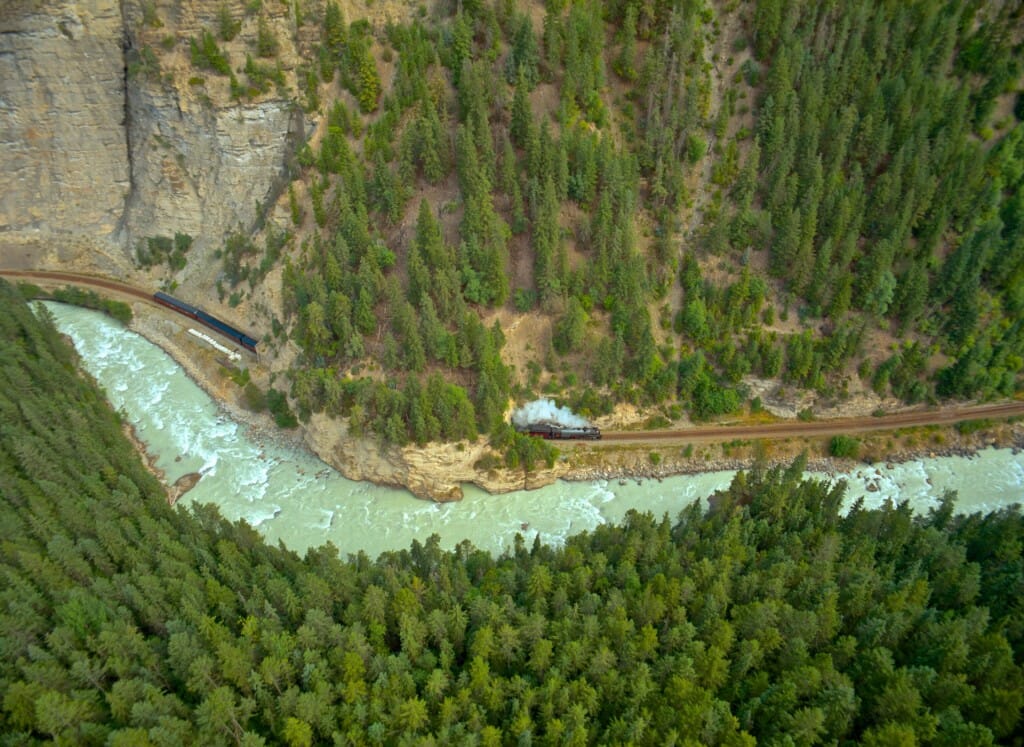
Deep in the Fraser Canyon, Locomotive 2816 and its trainset snake through tunnels and along steep river embankments, in a scene from Rocky Mountain Express.
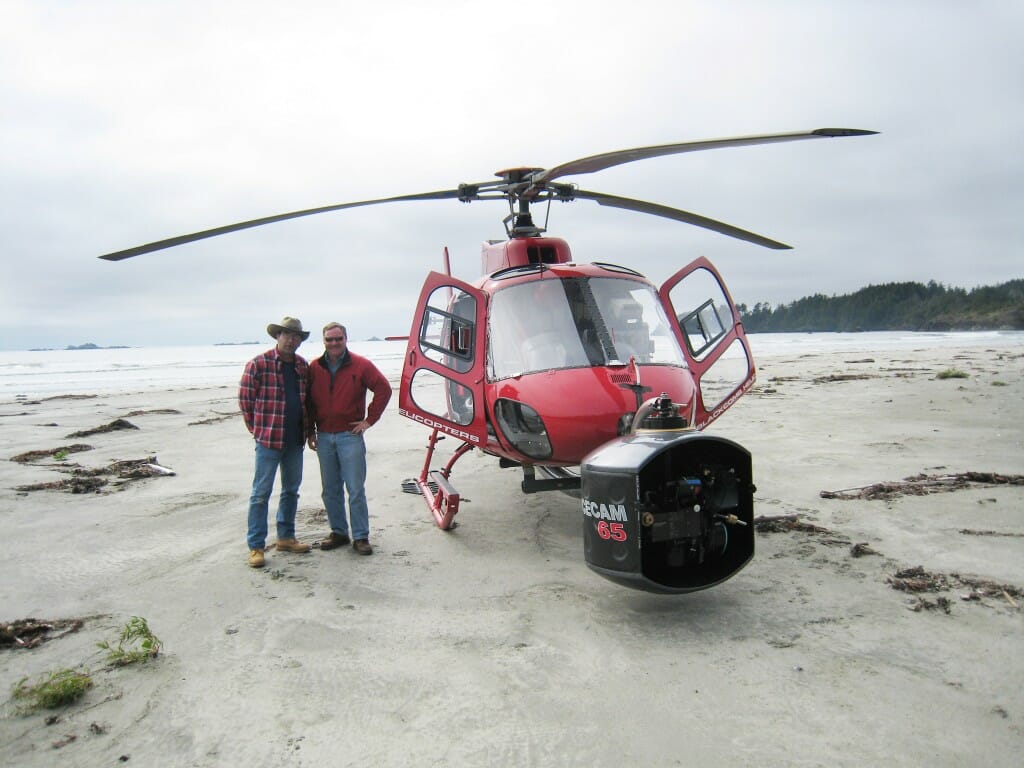
Pilot Steve Flynn (on the right in red jacket) is one of the best cinema pilots in the world and a key to amazing photography and the film crew’s survival both. With a gyro-stabilized camera system controlled from inside the helicopter by the superb operator-DOP Ralph Mendoza (Shown on the left in cowboy hat) the possibilities are almost limitless.
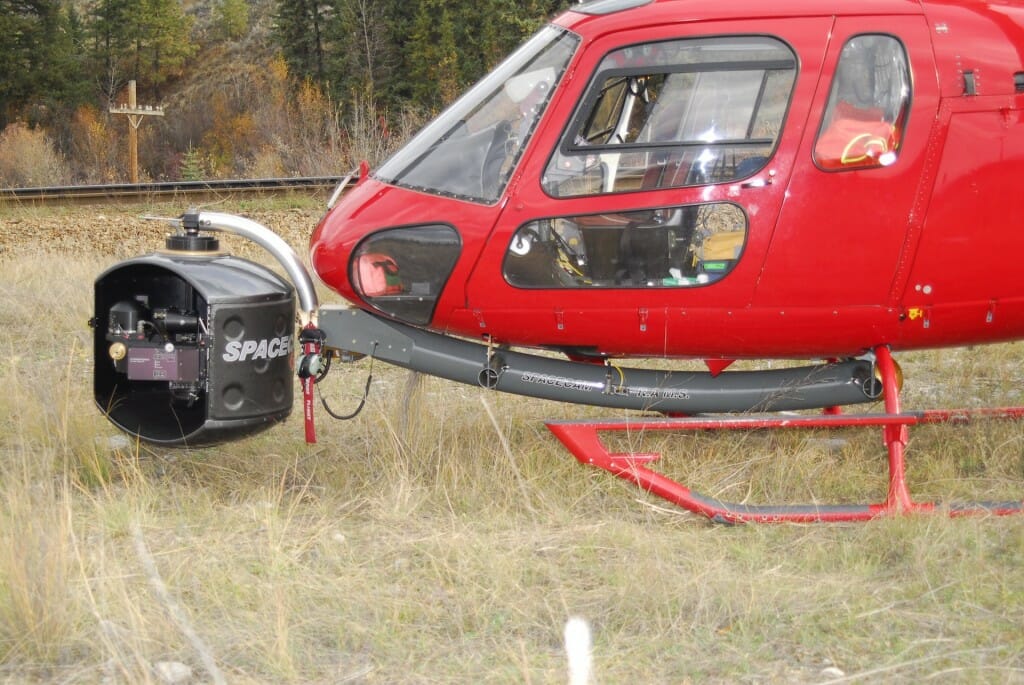
The production helicopter equipped with an IMAX camera in gyro-stabiliized housing by Spacecam. The extraordinary system uses a large format, full negative, 15perf /70 mm camera that can be remotely-operated from inside the cockpit. Being gyro-stabilized it is almost completely vibration free.
- The Spacecam unit is mounted to the underbelly of the chopper.
- The Spacecam operator sits next to the pilot.
- Remote controls enable a wide range of camera motion from inside the cockpit.
- Standard 1000′ foot loads of 65mm negative run through the camera in 3 minutes, meaning frequent landings for re-loading.
Camera Mounts
To achieve a truly kinetic “being-there” experience for the giant screen, the camera was mounted on various locations on the locomotive itself: from the cowcatcher on the front of the engine to the driving wheels, to the boiler, cab and tender. Every mounting position on the rugged, smoke-belching beast poses its own unique challenges.
Mounting the camera on different points of the locomotive, means building and installing unique mounts for each placement, often in situ and under pressure. The crew is always aware that the train, operating on mainline track, is subject to the critical scheduling requirements of the railway and the big freight trains that must pass on the same rails. Add to this: changing weather conditions and sunlight and the need to stop the train and re-load the camera every 3-minutes of shooting and the challenges are appreciable.
Out Front
The further out from the locomotive that the camera is mounted, the greater the moment and the more violently the camera is thrown about.
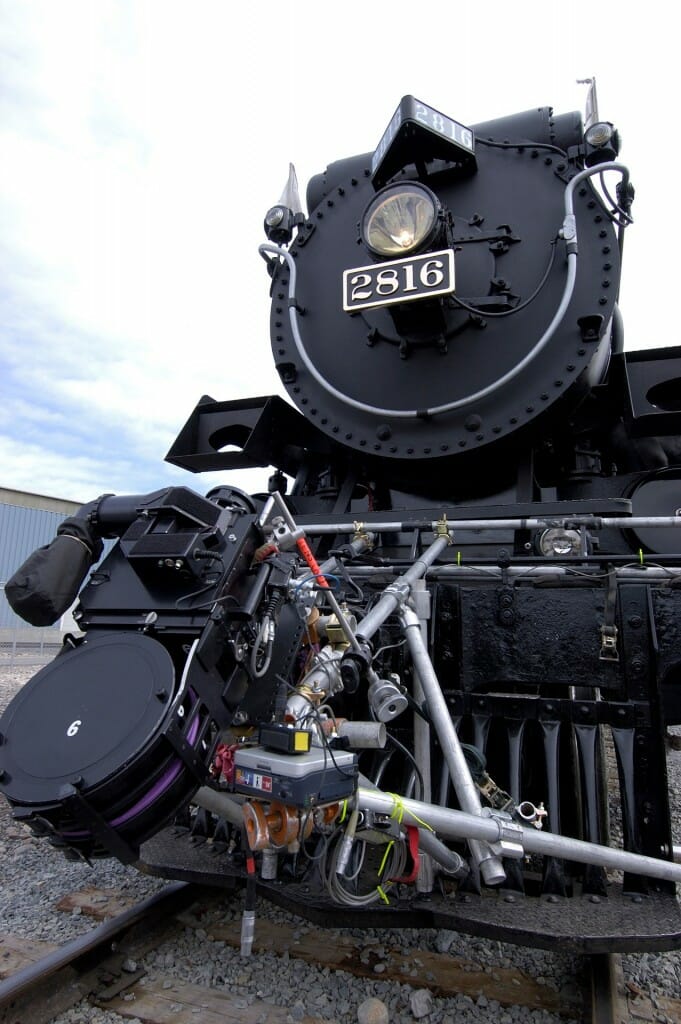
The IMAX® camera mounted on 2816 (above). The locomotive mounts designed and built by Montreal master grip Claude Fortin are extraordinarily rigid and particularly this one—so far out in front of the rough riding locomotive.
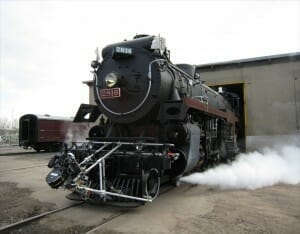 In spite of the superb mounts, filming from out front of the locomotive was restricted to modest acceleration on flat ground. While climbing steep grades under hard acceleration the camera would be nearly torn off and certainly the shots would be unusable.
In spite of the superb mounts, filming from out front of the locomotive was restricted to modest acceleration on flat ground. While climbing steep grades under hard acceleration the camera would be nearly torn off and certainly the shots would be unusable.
Atop the Locomotive
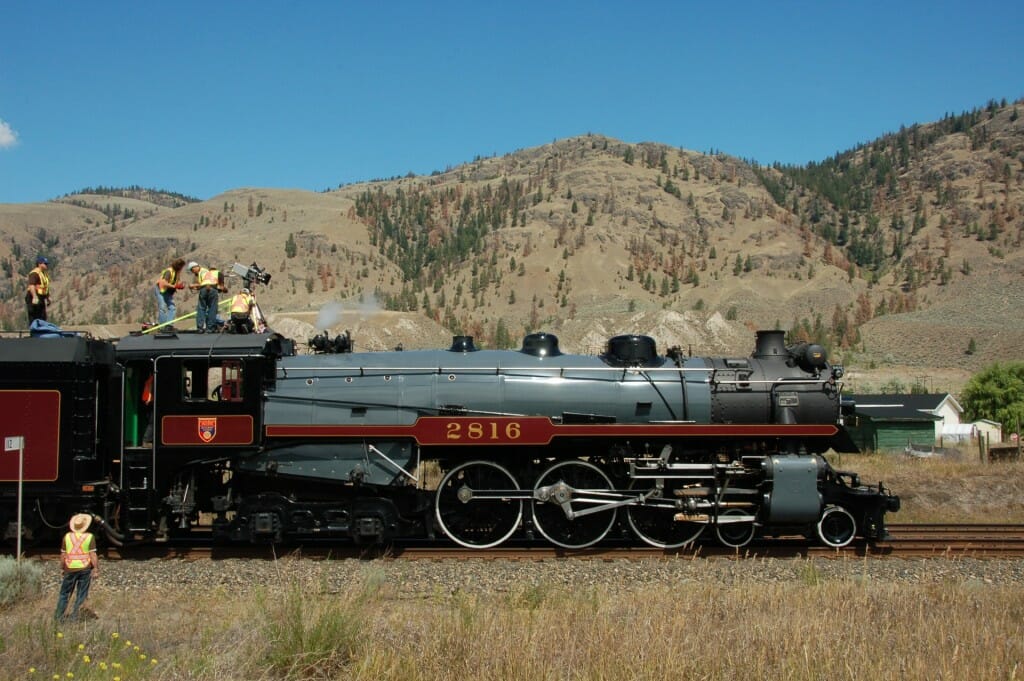
The camera is prepared for a shot forward over the boiler. Grease and water will soon cover the camera and lens and it must be cleaned between shots. Photo: Todd McConnell.
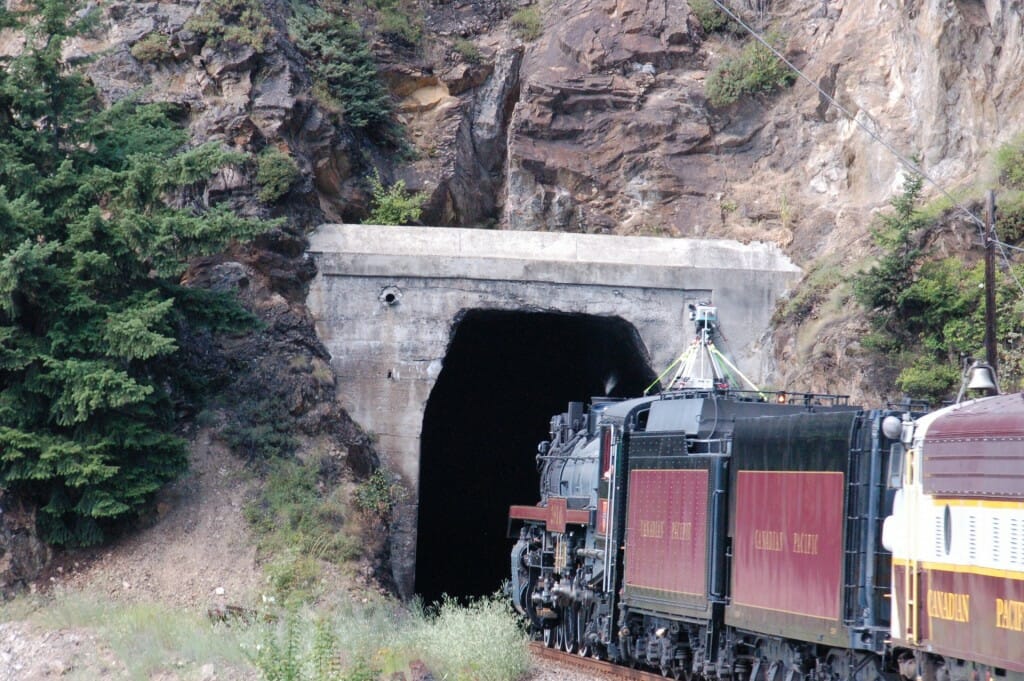
Although the height of the camera was measured carefully to conform with what is called the loading gauge of the railway or the maximum dimensions allowed, the train was stopped in front of the first obstruction encountered just to double check. It fit very tightly. One of the issues with tunnels is that steam locomotives produce powerful exhaust blasts that can loosen decades of built up diesel soot and throw it back on the train and the camera. Photo: Todd McConnell.
Behind the Wheels
The camera is prepared for a shot looking forward past the locomotive’s giant driving wheels.

Filmmaker Stephen Low makes adjustments to the camera in preparation for shooting a sequence from behind the driving wheels of the locomotive.
On the Boiler
Mounting the camera on a variety of locations on the locomotive offers audiences a unique ‘being there’ experience of railroading that even engineers don’t get to experience—a sense of immediacy, immersion and participation that is the hallmark of a well-crafted big screen experience.
On the Ground
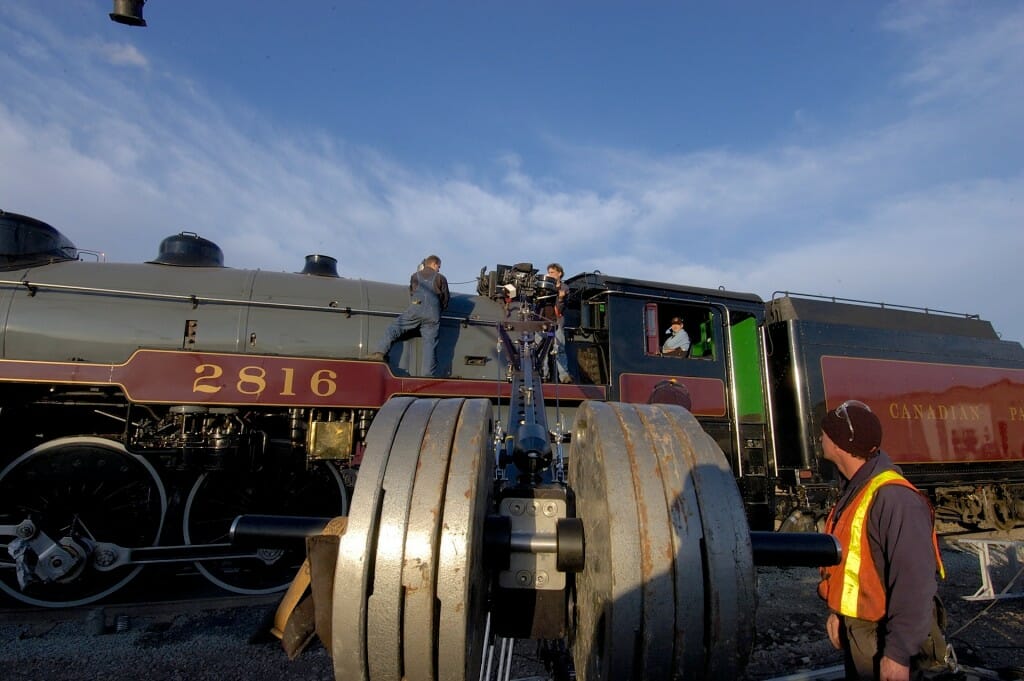
Several hundred pounds of counterweight balance the IMAX camera held aloft on a crane. Photo: Will Allen.
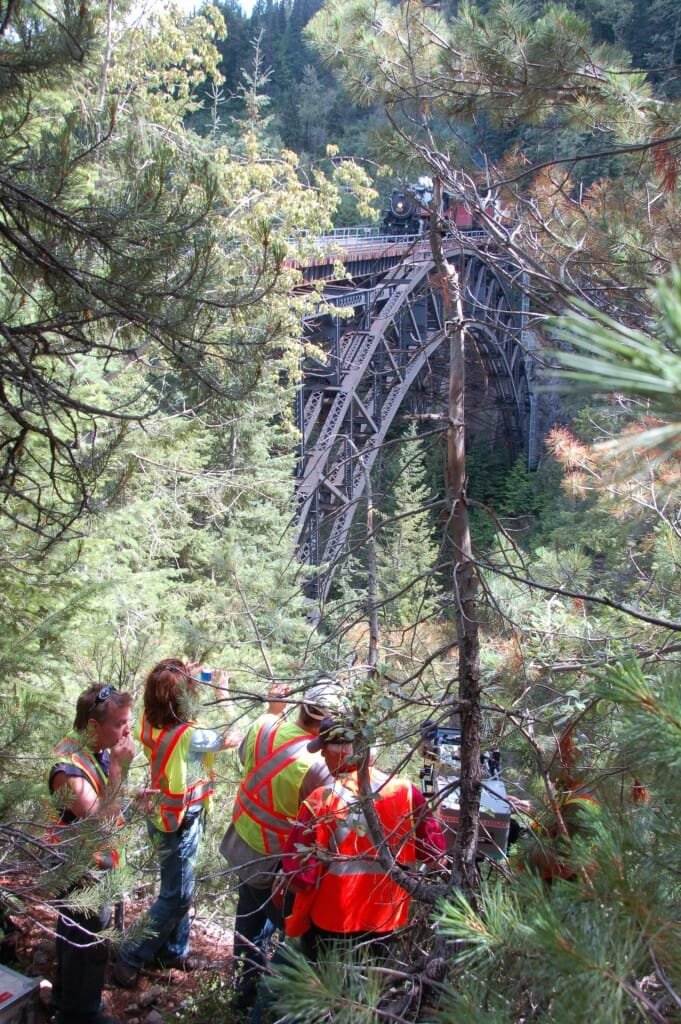
The crew has scrambled up a mountainside to grab a quick shot of the steam train crossing a bridge on the historic route. Photo: Todd McConnell.
Night Sequence
A crane is used to film the arrival of the train at night.
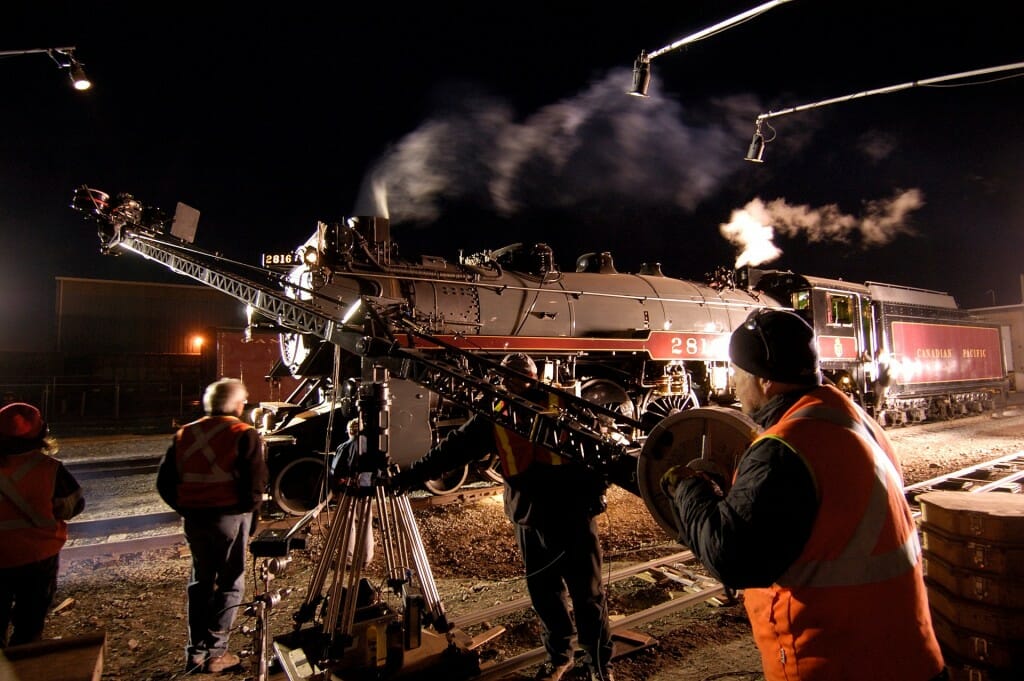
The Imax camera sits on a crane in the foreground as the crew prepares to shoot a night sequence with the engine. Photo: Will Allen.
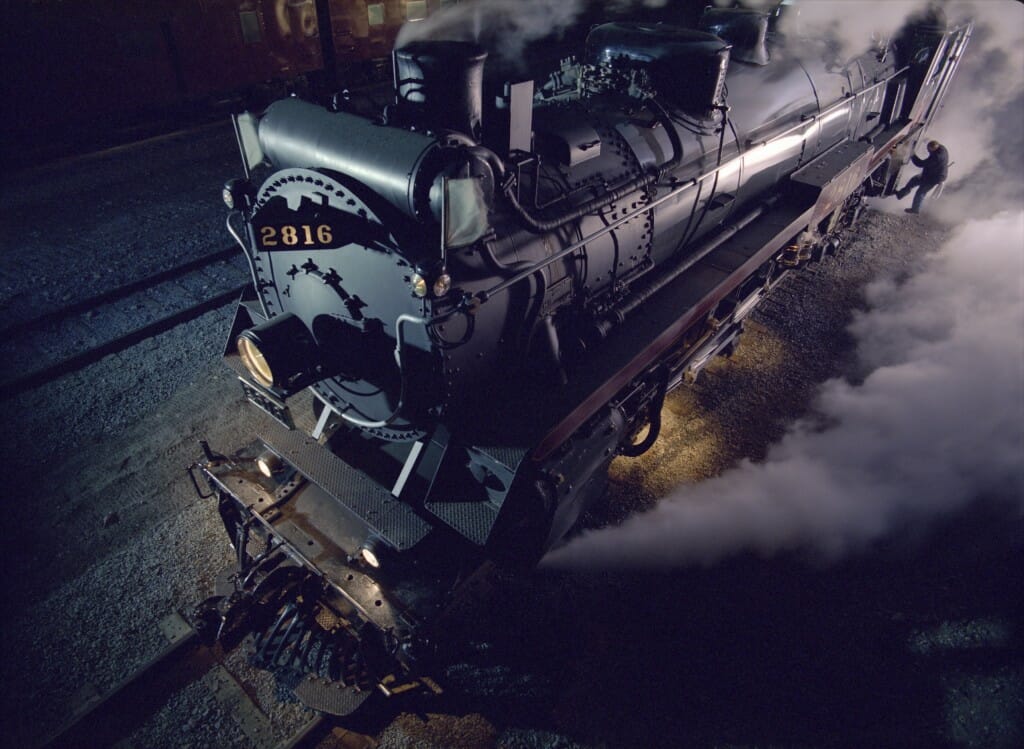
A scene from Rocky Mountain Express. “In the age of steam, entire communities lived to serve the appetites of these great machines, every hour of the day, every day of the year.”
Steam v.s. Diesel
80 years newer than the film’s hero steam locomotive 2816, the diesel locomotive’s horsepower is not much greater. While the diesel generates 4,400 horse power at slower speeds (for lifting heavy freight trains) the steam locomotive was built for speed and fast passenger trains. 2816 regularly traveled over a hundred miles an hour in passenger service. Beyond seventy miles an hour the diesel would be left behind.
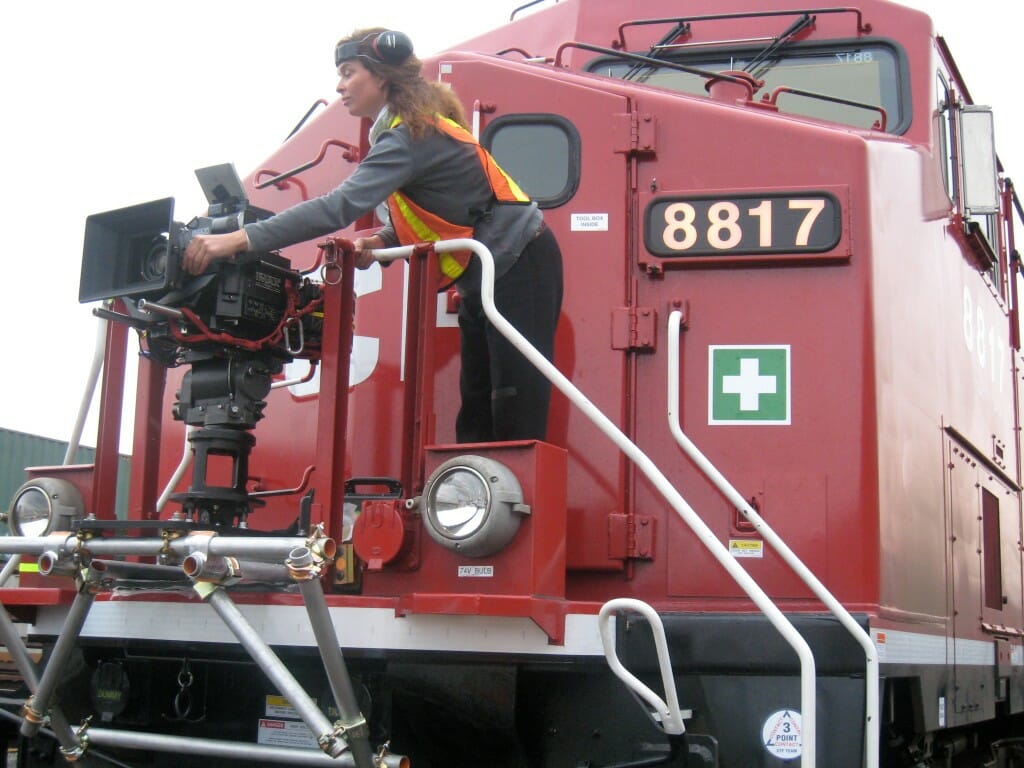
First assistant camera Carla Clarke prepares the Imax camera on the front of a brand new GE diesel locomotive for a sequence in the film.
The Sonic Landscape
Sound is a vital part of the giant screen experience and the team has carefully and faithfully captured and rendered in six-channel sound the remarkable symphony of sonic moods produced by the locomotive.
A special excursion was devoted just to capture the sound of the train. Recordist Thierry Morlass-Lurbe rigged the 2816 locomotive with microphones to capture all the rhythms and moods of the great machine and its mountain journey. The sounds of a steam journey were then matched with an original musical score by celebrated composer Michel Cusson and a soundscape designed by Peter Thillaye leading a sound mixing team.
The film was ultimately honoured with an award for Best Sound Editing, Special Venue at the MPSE Golden Reel Awards in 2012.
Collaborations & Outcomes
Creating a film on the scale of Rocky Mountain Express is an immense collaborative effort, involving ultimately hundreds of people and organizations. The Canadian Pacific Railway, together with the film crew, post-production personnel and exhibiting theaters all played a role in the success of the film. The outcome of the project is a film exhibited around the world, reaching all kinds of audiences—an experience that draws viewers into a shared kinetic journey that elucidates a vanishing piece of history and showcases a remarkable part of the planet.
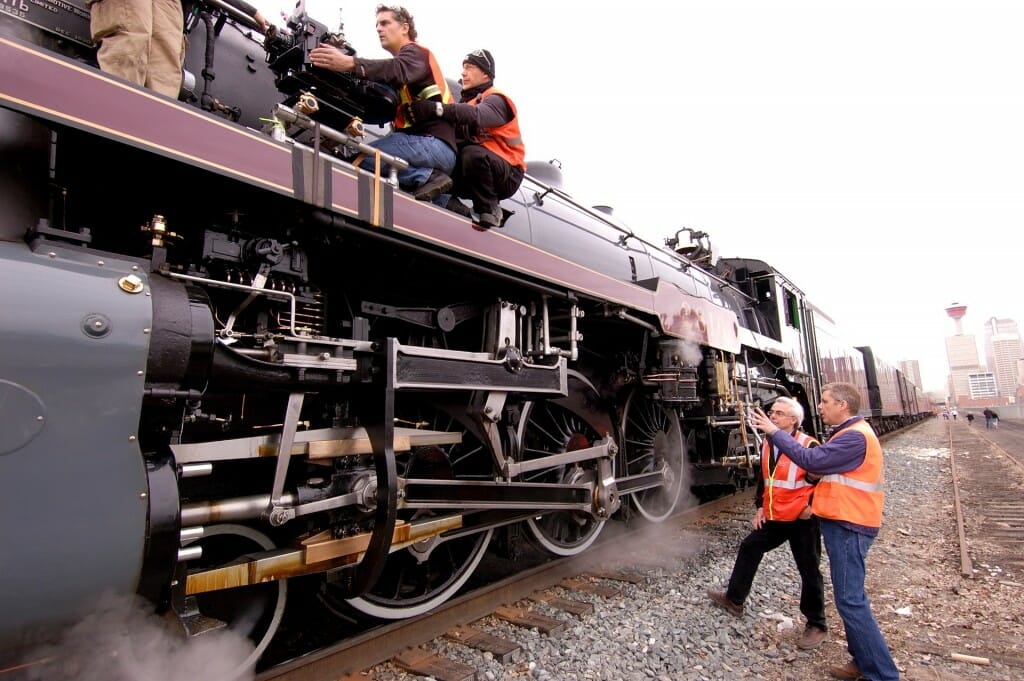
CPR executive Mark Seland (right) discusses a shot with Director Stephen Low as the camera crew prepares the Imax camera on the running board of steam locomotive 2816. The extent of cooperation by the railroad in the making of this film was very likely unprecedented in the history of film.
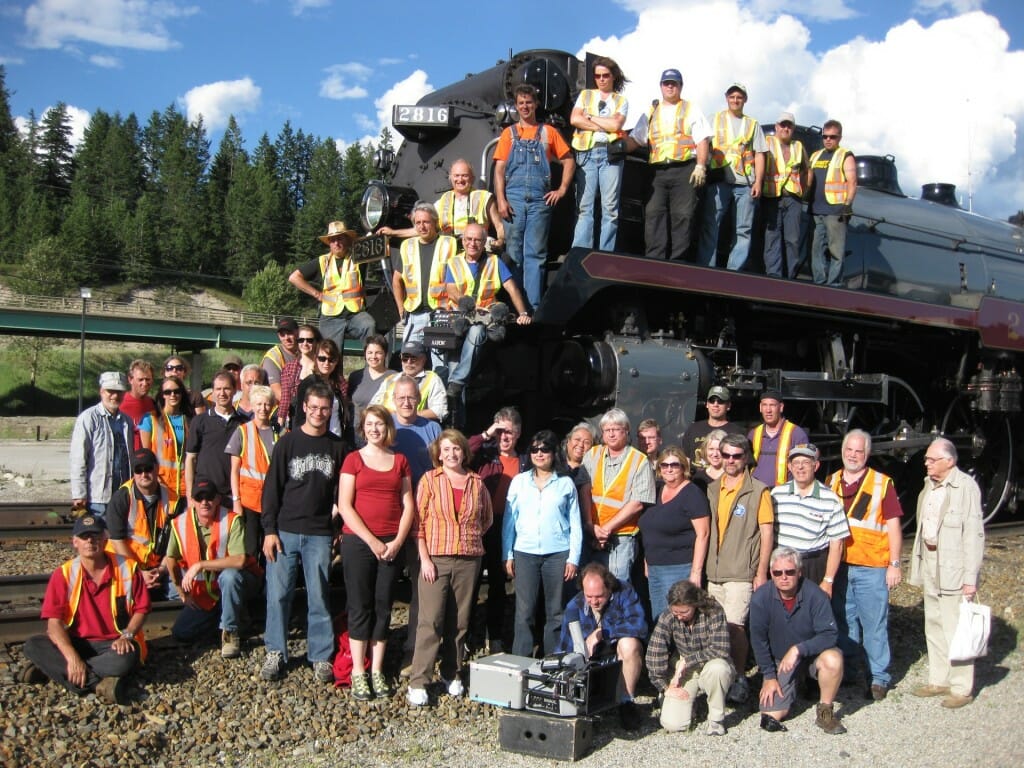
The train crew, production crew and passengers of a production excursion gather around the locomotive. Among the passengers are members of the giant screen exhibition community, representatives of IMAX theater exhibition partners in the Rocky Mountain Express project. For many, it’s a unique opportunity to witness the giant screen filmmaking process first-hand.
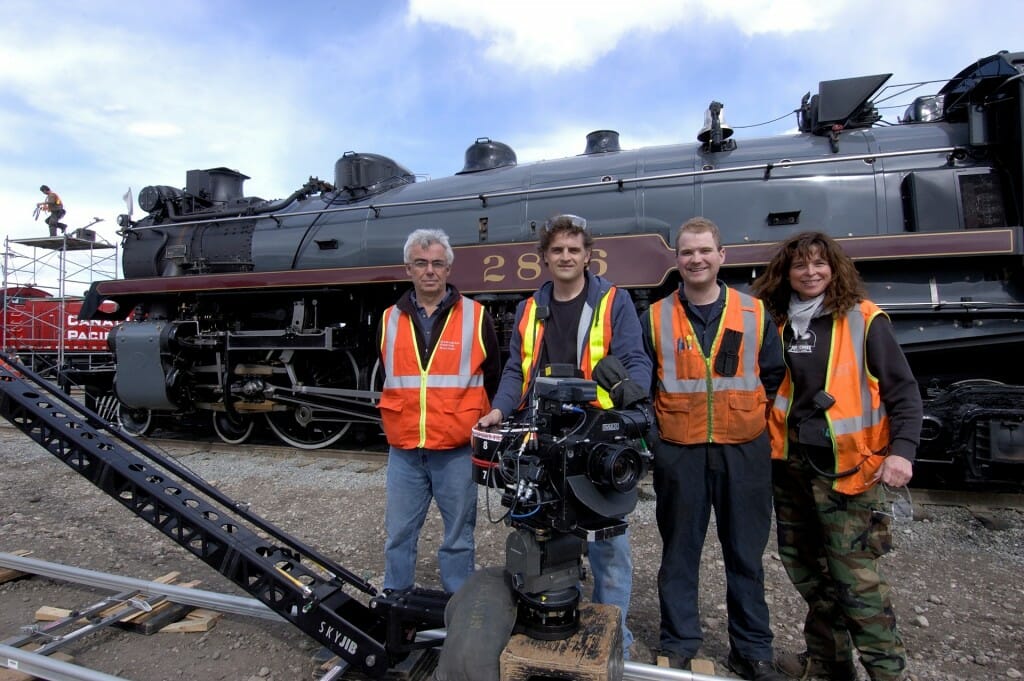
From right to left: Carla Clarke, first assistant camera; Jon Morris Steam locomotive “Hogger” or Engineer; Dillon Reade, camera operator and; Stephen Low, Director.
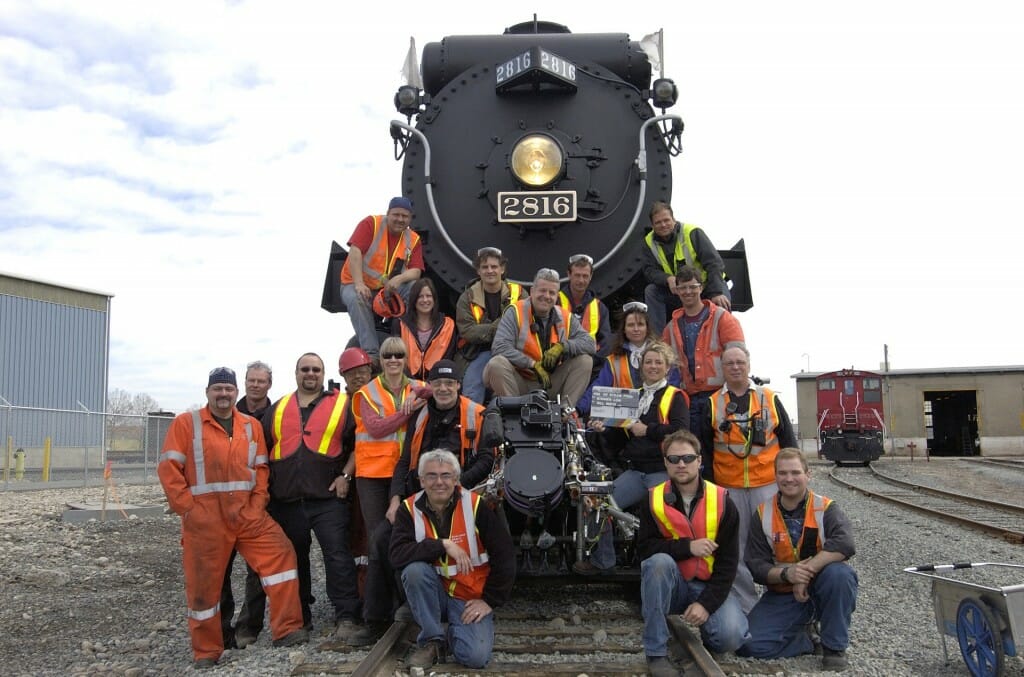
The Imax crew poses with steam crew. It doesn’t take long before everyone is equally coated in soot and grease.
The hugely positive audience response to Rocky Mountain Express has seen the film exhibited around the world from Singapore to Switzerland, from Melbourne to Paris and The Hague. Uniquely, it’s a giant screen film that many audience members report seeing more than once.
Links
Official film site: www.rockymountainexpressfilm.com
Film page: www.stephenlow.com/films/rocky-mountain-express
Where to see it: www.rockymountainexpressfilm.com/updates/where-to-see-it

